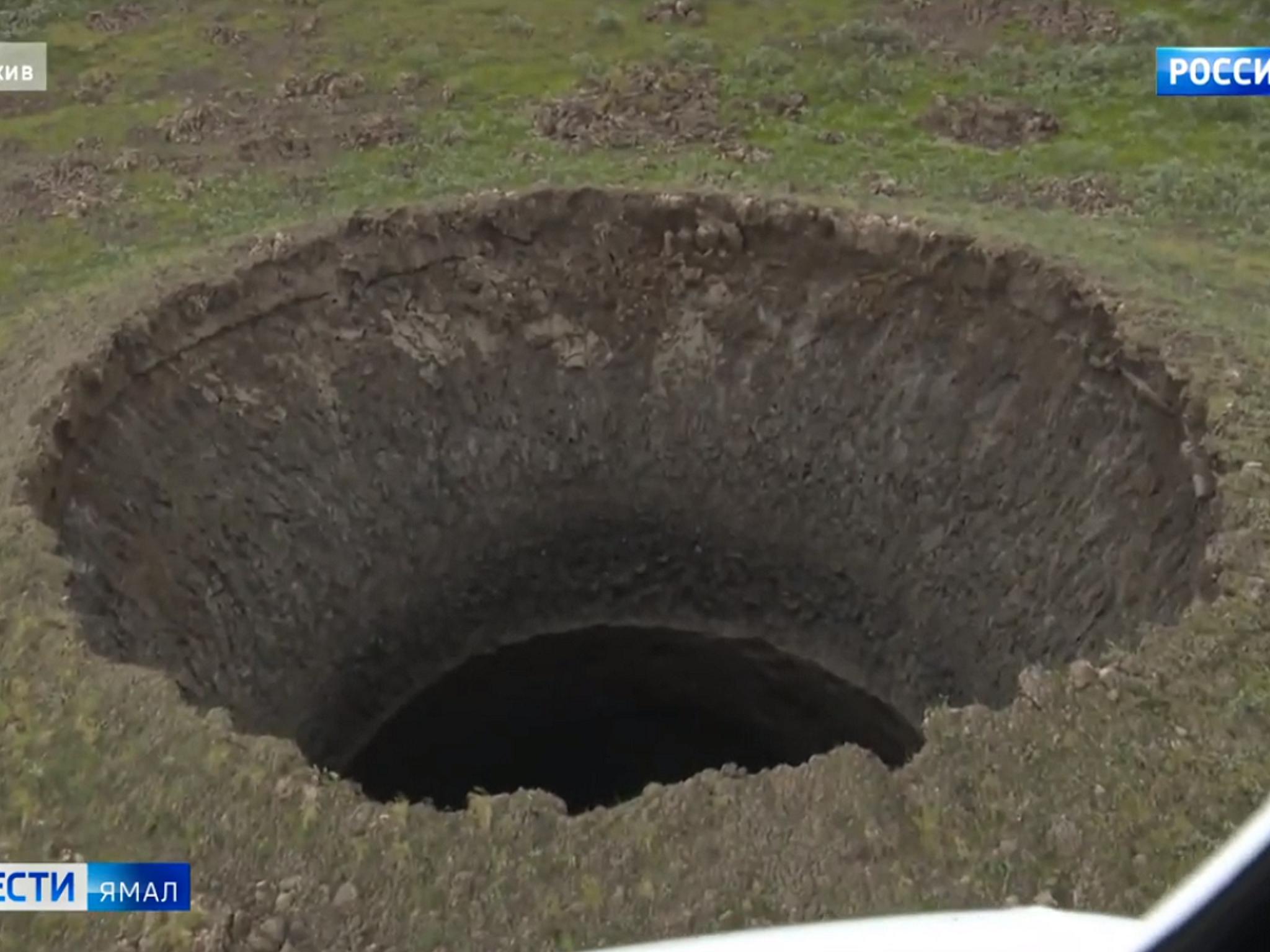Huge explosion leaves crater 165ft deep in Arctic tundra following record hot summer
Giant hole, thought to have been caused by methane release, is biggest of its kind discovered in Russia’s Yamal peninsula
A huge crater has appeared in Russia’s Arctic region following a massive explosion.
Scientists believe the 165ft-deep hole was caused by the eruption of a build-up of methane gas beneath the thawing permafrost following record temperatures over the summer.
It was reportedly initially spotted by chance by a television crew flying over the Yamal peninsula on their way back from an unrelated job in July.
Blocks of ice and soil were scattered hundreds of metres from the epicentre by the force of the blast, according to scientists who studied the site after it was discovered by Vesti Yamal TV.
It is the 17th crater of its kind to be found and documented in Yamal since 2014 – and is thought to be the biggest.
Dr Evgeny Chuvilin, a leading researcher at the Skolkovo Institute of Science and Technology, told Vesti Yamal TV the latest hole is “striking in its size and grandeur”.
The expert said the craters was created by “colossal forces of nature”.
Professor Vasily Bogoyavlensky, of the Russian Oil and Gas Research Institute, described the hole as “unique”.
“It carries a lot of additional scientific information, which I am not yet ready to disclose,” he told the TV station.
“This is the subject of scientific publications.”

Prof Bogoyavlensky explained the craters come about when “gas-saturated cavities are formed in the permafrost”.
These are “a void space filled with gas with high pressure”, he said.
The explosion occurs when the pressure of the gas builds up and pierces the layer of permafrost on top.
The craters have given rise to conspiracy theories over the years – such as UFOs and weapons testing – which scientists immediately set about debunking when the first appeared in 2014.
Join our commenting forum
Join thought-provoking conversations, follow other Independent readers and see their replies
Comments